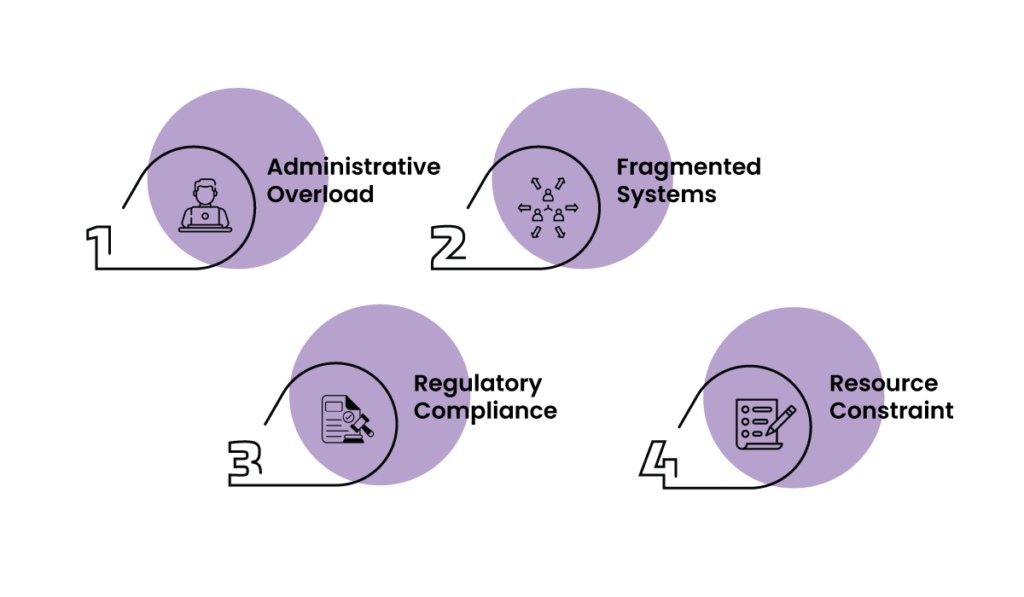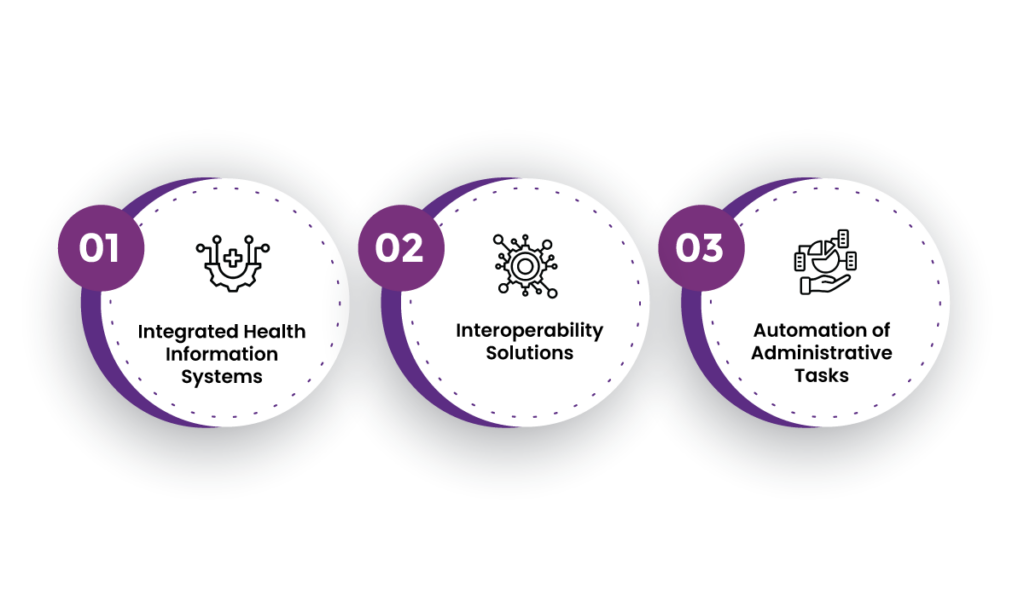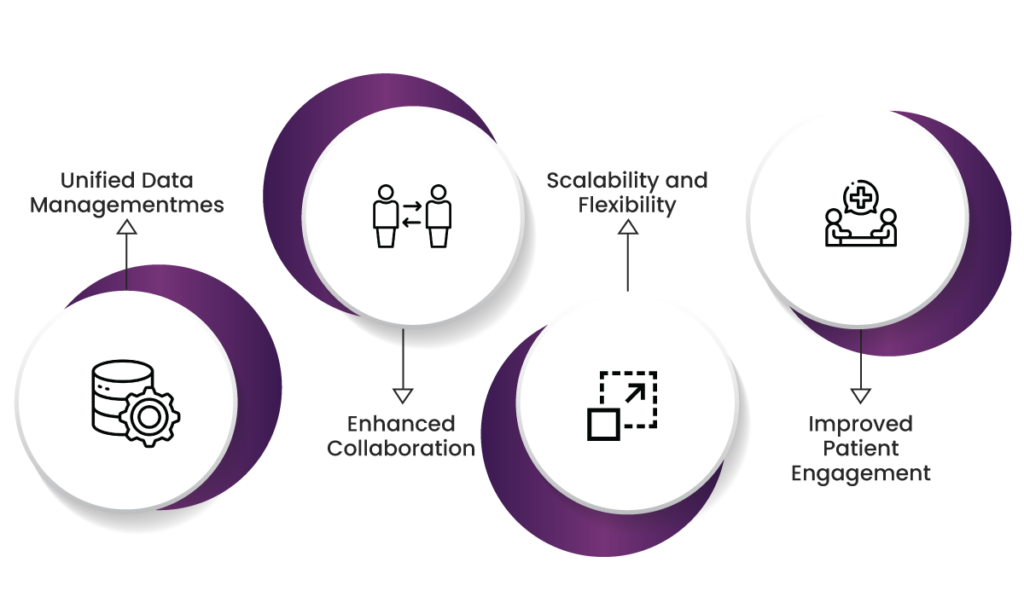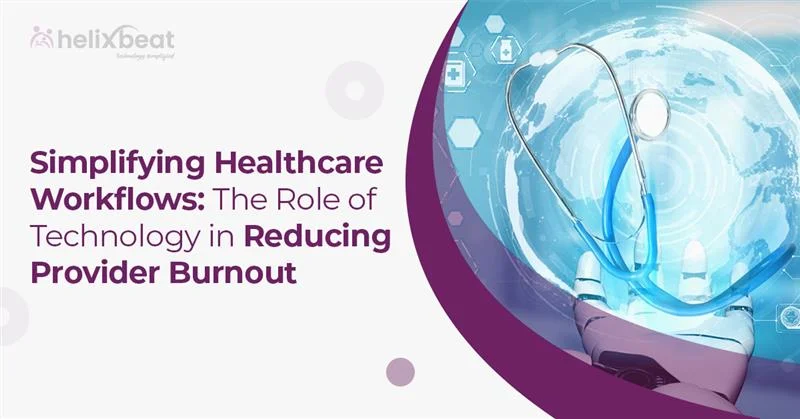Healthcare is a field driven by compassion and dedication, but behind the scenes, many providers grapple with the mounting pressures of long hours, endless paperwork, and demanding workflows. These challenges not only take a toll on their well-being but also threaten the quality of patient care.
However, amidst these hurdles lies a powerful solution: technology in healthcare. Today, different solutions can simplify operations and help providers shift their focus back to what truly matters—delivering exceptional patient care. In this blog, we’ll discuss how technology in healthcare can streamline operational workflows and reduce provider burnout.
Table of Contents
The Operational Challenges in Healthcare
Healthcare professionals face many operational hurdles daily, each impacting their efficiency and overall well-being. These challenges include:
1. Administrative Overload
Switching to electronic health records (EHRs) aimed to simplify healthcare by cutting down paperwork and boosting efficiency. However, this transition has resulted in an unexpected consequence: increased administrative burden for healthcare providers.
Constant clicking and navigating through EHR systems causes “screen fatigue” and disconnects providers from their main goal—offering compassionate, personalized care. As a result, this heavy administrative workload leads to burnout and affects the quality of patient care.
2. Fragmented Systems
In many healthcare settings, patient care is fragmented across various systems, such as those managing lab results, imaging, billing, prescriptions, etc. This lack of interoperability between systems creates inefficiencies and lead to treatment errors. Therefore, providers often struggle to obtain a complete patient picture and waste time navigating different platforms.
3. Regulatory Compliance
Navigating complex healthcare regulations is a time-consuming endeavor. Healthcare professionals must maintain meticulous records, including patient data, treatment plans, and adherence to privacy standards like HIPAA (in the U.S.). This documentation process is also prone to errors, which can result in hefty fines, loss of accreditation, or even legal action. Therefore, it creates a high-pressure environment where mistakes are costly, and vigilance is non-negotiable.
4. Resource Constraint
Resource constraints in the healthcare industry manifest in multiple ways, from workforce shortages to limited financial allocations. Many healthcare facilities operate with fewer staff due to difficulties in hiring and retaining qualified professionals. This scenario can compromise care quality, as time constraints prevent thorough evaluations and follow-ups.
This combination of high workloads and resource gaps creates a stressful work environment. Emotional exhaustion, a hallmark of burnout, becomes inevitable as professionals struggle to meet both patient needs and administrative demands.

How Technology in Healthcare Can Simplify Workflows
1. Integrated Health Information Systems
By consolidating patient information into unified platforms, integrated health systems can reduce the need for repetitive data entry. As a result, providers can access comprehensive patient histories seamlessly and minimize the time spent navigating through multiple systems. This not only reduces errors but also enhances the speed and accuracy of decision-making.
2. Interoperability Solutions
Interoperability—the ability of different systems to communicate and exchange information—is revolutionizing care coordination. When systems work in harmony, providers can collaborate effectively and reduce delays or potential missteps in patient care. Also, improved system integration facilitates better communication across departments and healthcare facilities.
3. Automation of Administrative Tasks
Automation is a game-changer for routine tasks such as appointment scheduling, billing, prescription refills, and insurance claims. By offloading these repetitive duties to automated systems, providers can allocate more time to direct patient care. Additionally, automation reduces errors in administrative processes and enhances overall operational efficiency.

Benefits of Advanced Healthcare Platforms
Emerging healthcare platforms offer several benefits that contribute to workflow simplification and reduced provider burnout. These benefits extend beyond mere operational improvements:
1. Unified Data Management
Modern technology in healthcare integrates various data sources, including EHRs, diagnostic reports, and patient-reported outcomes, into a single interface. This centralized approach streamlines access to critical information, thus reducing the time spent searching for records and improving the accuracy of clinical decisions.
2. Enhanced Collaboration
Real-time communication tools embedded within healthcare platforms enable seamless collaboration among multidisciplinary teams. Whether it’s consulting a specialist or coordinating with nursing staff, such technology in healthcare facilitates quicker decision-making and improves care continuity.
3. Scalability and Flexibility
Healthcare organizations are dynamic entities that require systems capable of evolving with their needs. Therefore, advanced platforms offer scalability and customization options, allowing them to adapt to changes in patient volume, services offered, and regulatory requirements. Such technology in healthcare remains effective as organizations grow, thus providing long-term value.
4. Improved Patient Engagement
Patient engagement tools integrated into healthcare platforms empower individuals to take an active role in their care. By granting patients access to their health information, facilitating appointment scheduling, and offering communication channels with providers, these tools improve satisfaction and build trust. Also, engaged patients are more likely to adhere to treatment plans and report better health outcomes.

The Human Impact
Beyond operational efficiencies, the adoption of advanced technologies has a profound human impact. By reducing the administrative burden on providers, these solutions allow them to reconnect with their core purpose—caring for patients. As a result, providers can experience improved job satisfaction, reduced stress levels, and a greater sense of professional fulfillment.
Patients also benefit from these advancements. Streamlined workflows lead to shorter wait times, more accurate diagnoses, and personalized care. Besides, enhanced communication and engagement tools create stronger patient-provider relationships, which ultimately contribute to better health outcomes.
The Road Ahead
The integration of advanced technology in healthcare is transforming the way providers operate. By addressing operational challenges and simplifying workflows, these innovations are paving the way for a more efficient, patient-centered healthcare system. While challenges remain, the potential benefits—both for providers and patients—are immense.
As the industry continues to evolve, healthcare organizations must prioritize adopting technologies that align with their unique needs. With the right tools in place, the future of healthcare holds the promise of reduced provider burnout, enhanced patient care, and a system that thrives on efficiency and collaboration.
FAQs
1. What are the main operational challenges healthcare providers face today?
Healthcare providers deal with several challenges, including administrative overload, fragmented systems, resource constraints, and meeting complex regulatory compliance requirements.
2. How does administrative overload contribute to provider burnout?
Administrative burdens, including excessive documentation and navigating complex EHR systems, consume valuable time that could be spent on patient care, leading to physician burnout and decreased job satisfaction.
3. What is interoperability, and why is it important in healthcare?
Interoperability refers to the ability of different healthcare systems to communicate and exchange information seamlessly. It improves care coordination, reduces delays, and minimizes treatment errors.
4. How can automation help reduce administrative tasks in healthcare?
Automation can handle routine tasks like appointment scheduling, billing, etc., thus helping providers to focus on patient care and reducing errors in administrative processes.
5. What are the benefits of using integrated health information systems?
Integrated systems consolidate patient data into a single platform, reducing repetitive data entry, improving decision-making speed, and lowering the chances of errors.
6. How does technology in healthcare improve patient engagement?
Patient engagement tools allow individuals to access their health information, schedule appointments, and communicate with providers, thus boosting trust and improving adherence to treatment plans.
7. What impact does technology have on the well-being of healthcare providers?
By reducing administrative burdens and streamlining workflows, technology helps providers spend more time on patient care, which leads to reduced stress and higher job satisfaction.














